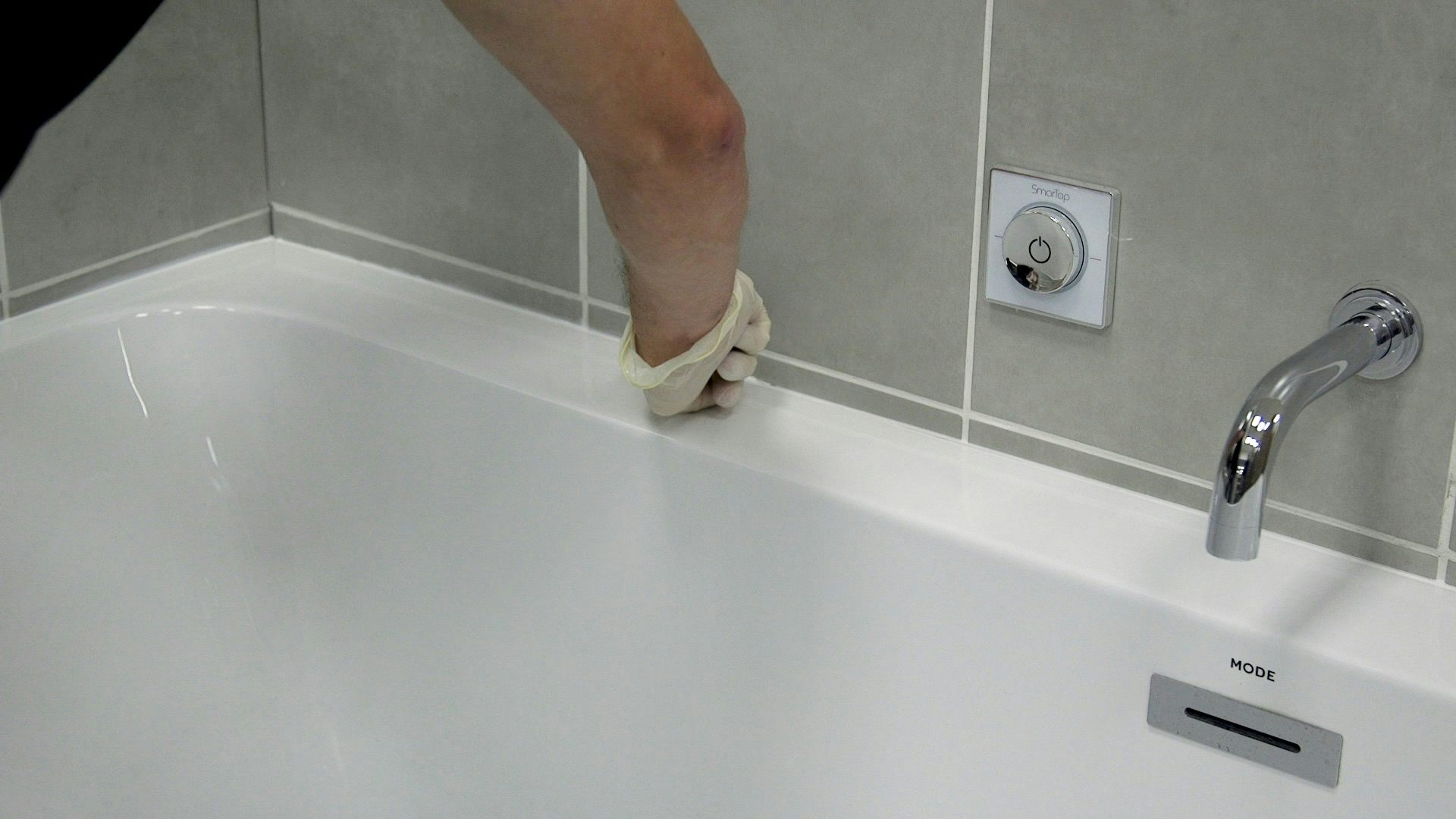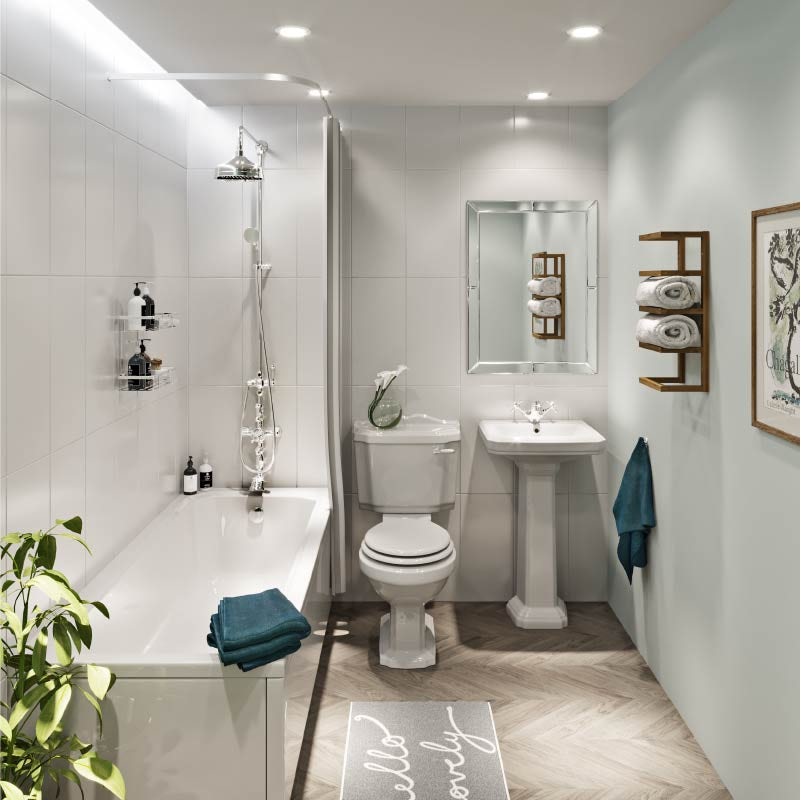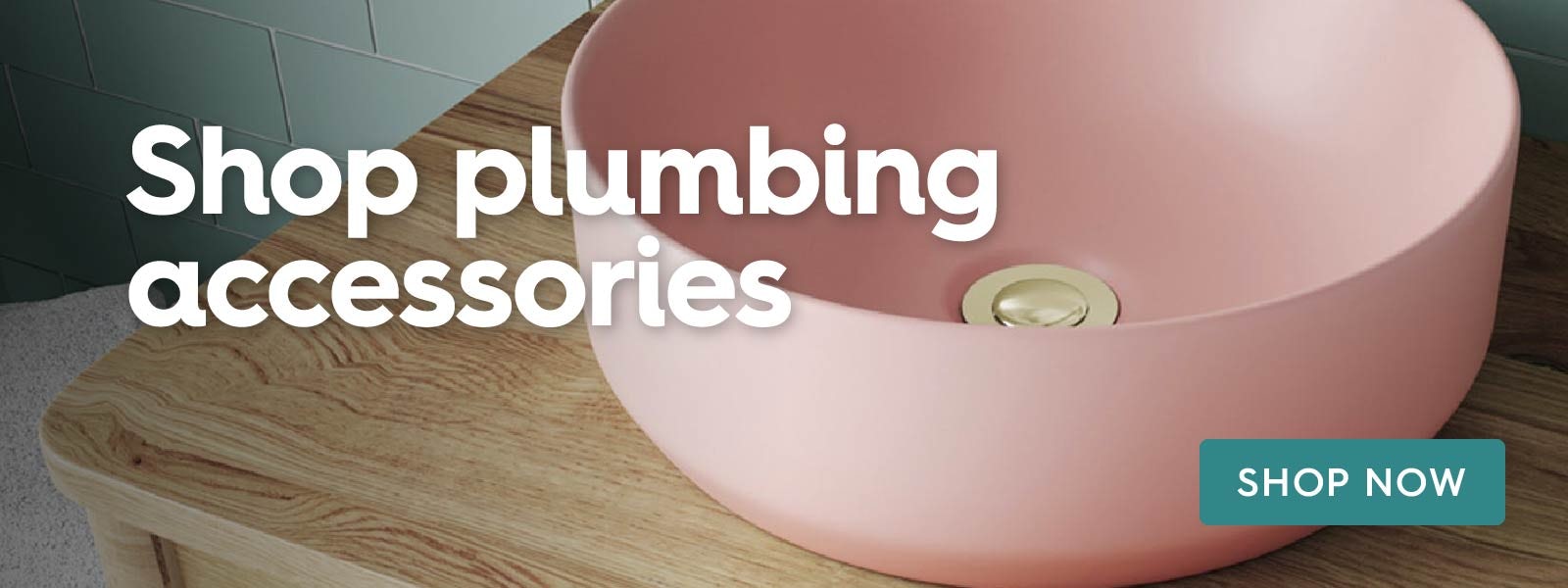Mouldy silicone sealant is unsightly and annoying, ruining the look of your dream bathroom. In this handy article, we’ll explain why it can turn mouldy and show you what you can do to prevent it.
Silicone sealant, if you weren’t already aware, is an adhesive found in most bathrooms and kitchens. It works to create a waterproof seal between tiles, appliances and flooring.
Usually white in colour, over time you may see spots of mould or discolouration appearing on it, especially in consistently damp areas like around your bath or shower tray.
So, why does silicone sealant turn mouldy? Read on, as we answer one of your most frequently asked bathroom questions, and show you how to prevent mould from developing in the first place.
Where does the mould come from?
As previously mentioned, silicone sealant is waterproof—so the mould doesn’t actually grow on the surface of the product itself. Mould needs a damp surface on which to develop, and this is simply not possible on the sealant itself. So, if the mould isn’t growing on the sealant, where is it growing?
If you discover patches of mould, it will have grown through from the surface behind the adhesive. This usually occurs if the surface is damp, which allows mould to thrive.
Fortunately, a minor amount of mould is usually harmless. However, if someone has a sensitivity to it, it can trigger respiratory problems. There is also a chance of infection when a person comes into contact with it, particularly vulnerable groups such as children or the elderly. Therefore, it's essential to remove the mould as soon as possible and take preventative measures to ensure it doesn’t develop further.
A good quality seal around your bath and other products is the first step to preventing mould growth
Why does silicone sealant turn mouldy?
To help you remedy the issues, it's important to understand why mould occurs, and there are several common reasons…
Adhesive issues
One way that water reaches the area behind the sealant is if the sealant itself breaks. This can occur if the adhesive is old or low in quality. Older sealant can crack or lose its grip, reducing its watertight properties.
Appliance movement
Mould can occur after you have moved a large appliance, like a shower enclosure. The sealant may have initially prevented air and water from getting to the area behind it, but movement can damage the seal, creating gaps. This then lets water and mould get in behind the adhesive.
Damp environment
If a room is consistently damp, mould is much more likely to develop. Areas of your home where there is excessive moisture, such as bathrooms or kitchens, are more likely to have mould as showering or boiling water can increase the humidity.
If the ventilation in your room is inadequate (e.g. you don’t have an extractor fan fitted), moisture cannot escape easily, meaning you increase the risk of mould developing.
A clean, stylish, mould-free bathroom is the dream!
How to prevent mould on silicone sealant
The answer to your question “why does silicone sealant turn mouldy?” may be simple: you don’t have preventative measures in place to reduce a damp environment.
Luckily, you can take several proactive steps to prevent the appearance of mould on bathroom surfaces and sealant.
Ventilate your bathroom
Mould grows in damp areas—so one of the most effective ways to prevent it is to remove as much water as possible. However, this can be difficult in bathrooms as they can often become very humid after a bath or shower. The best way to prevent excess moisture build-up is to ventilate the area properly with an extractor fan. They are relatively inexpensive to purchase and you can find out the going rate for installation in our bathroom fitting costs guide.
Another option is to open your windows after a shower or bath. This will not stop the problem altogether but will reduce the risk of it occurring.
Choose high quality adhesive
If water cannot enter an environment, the risk of mould will be dramatically reduced. When installing bathroom products or replacing seals, always choose a high quality sealant. It will be more effective in creating a waterproof barrier between the surface where the moisture can seep in and the area underneath the sealant.
Mould spores travel through the air. If they cannot come into contact with an area because it has an airtight seal, mould is less likely to grow.
Pick out a high quality adhesive when sealing bathroom products
Exercise caution when sealing products
The silicone adhesive around a product, like a bath, basin or shower enclosure, helps to secure it in place. If the product can’t move, it is less likely to cause a break in the sealant, leading to mould growth.
You can prevent this from happening by properly securing the product before sealing. You can do this by glueing, screwing or otherwise securely attaching the product, as appropriate.
If you move the product for any reason, exercise caution and inspect the sealant afterwards for any cracks. You can re-seal those areas to prevent any moisture build-up. Check out the video below.
Verdict—Why does silicone sealant turn mouldy?
Hopefully, this has answered your question “why does silicone sealant turn mouldy?”.
Although there is no definitive way to prevent mould growth, creating a watertight seal will prevent moisture from reaching the area behind the adhesive. This, along with reducing dampness in your room, can be the most effective way to prevent your silicone seal from turning mouldy.
More quick fixes for your bathroom
Fed up with all those niggly little issues in your bathroom? Head over to our Switches and Fixes hub where you’ll find the answers to all your problems. Check out our step-by-step guides to regrouting tiles, replacing a toilet seat, replacing a cracked tile and cleaning a tap cartridge, for starters!
Shop plumbing accessories
If you need to remove mould and re-seal your bathroom products, you’ll find a wide range of high quality plumbing accessories at Victoria Plum, including plumbing consumables like silicone sealant, tile grout and adhesive. Simply click on the image below to begin shopping.











